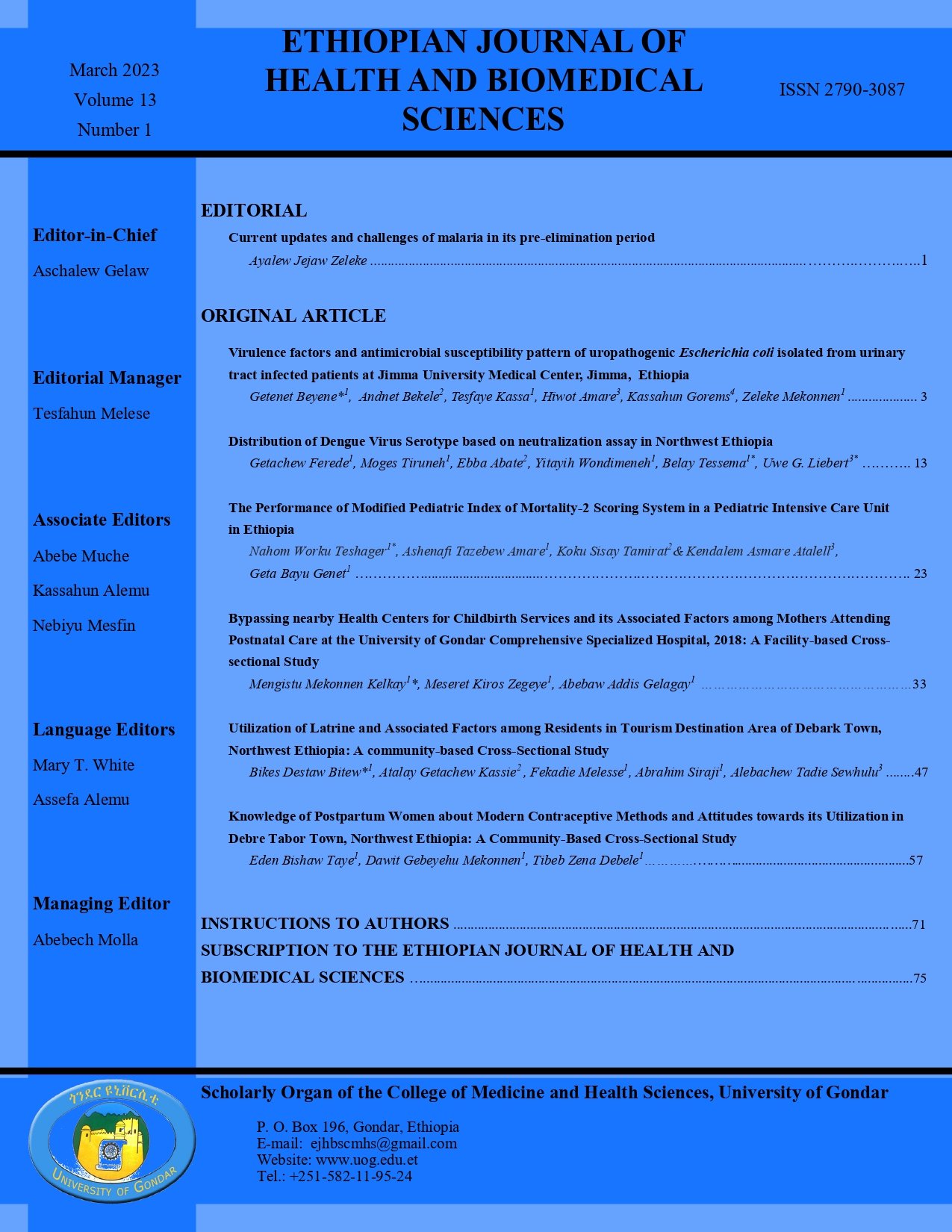The Performance of Modified Pediatric Index of Mortality-2 Scoring System in a Pediatric Intensive Care Unit in Ethiopia
DOI:
https://doi.org/10.20372/ejhbs.v13i1.436Keywords:
Pediatric index of mortality, Validation, Calibration, Pediatric intensive care unit, EthiopiaAbstract
Background: The mortality rate remains high in pediatrics intensive care units. Hence, predicting mortality in a pediatric intensive care unit (PICU) is vital for improving the quality of care and survival of children. The pediatric index of mortality-2 (PIM-2), is one of the most used prediction models in resource-limited setups, which does not need extensive laboratory investigation. Thus, this study aimed at assessing the performance of the modified PIM-2 score in a pediatric intensive care unit at the University of Gondar Comprehensive Specialized Hospital, Ethiopia.
Method: A single-centered prospective cohort study was conducted among 313 children admitted to the pediatrics intensive care unit at the University of Gondar Comprehensive Specialized Hospital. Data were collected by structured checklists adapted from different pieces of literature, through history taking, patient document review, and physical examination. The modified PIM-2 was scored within the first hour of admission. The standardized mortality ratio (SMR) was calculated using the Mid-P exact method. The discriminatory function was assessed by the area under the receiver operating characteristic (ROC) curve. The Hosmer-Lemeshow goodness of fit test was used for calibration.
Result: A total of 313 participants with a median age of 48 months (IQR: 12–122) at admission were included in this analysis. Of those 59.7% were males. The median duration of hospital stay was three days (IQR: 1–6).A total of 102 (32.6%) children died during the study period. The overall predicted mortality rate by the PIM-2 score was 11.1%, giving an SMR of 2.93 (95% CI: 2.11, 3.95). The area under receiver operating characteristics (AUROC) of PIM-2 was 0.79 (95% CI: 0.76, 0.86), and the Hosmer-Lemeshow goodness of fit test across deciles of risk strata showed good calibration (X2=7.45, df=8, p=0.489) as well as across subgroups by age, diagnosis, and nutritional status.
Conclusion: The modified PIM-2 had a fair discriminatory function and good calibration in the study setting. Though it can be used to prioritize care and for the assessment of the quality of care, we recommend developing and validating another parsimonious risk score with a better discriminatory function.
Downloads
Published
How to Cite
Issue
Section
License
Copyright (c) 2023 Dr Nahom Teshager

This work is licensed under a Creative Commons Attribution-NonCommercial 4.0 International License.


